‘A beautiful new home’: Big cats return to Fort Worth Zoo as new habitat opens to public
An excited group gathered around the new lion closure at the Fort Worth Zoo on Thursday morning. A little boy and girl vied for the best position at the glass window, and several small children perched on their parents’ shoulders.
“Look at its paws!” a woman exclaimed as she encouraged two children to get closer to the glass.
Male lion Jabulani lay on the grass a few feet from the partition, blinking his eyes and twitching his tail. One of the female lions paced nearby. Two waterfalls cascaded down a rock wall at the back of the enclosure and several smaller waterfalls splashed into a pool behind Jabulani.
“I like it!” 6-year-old Harper Herbst said. “It’s pretty cool,” her 9-year-old sister Hadley Herbst added.
Their grandmother Fran Carey said she’d been looking forward to the exhibit opening.
“It’s impressive how (the lions) are so close,” she said.
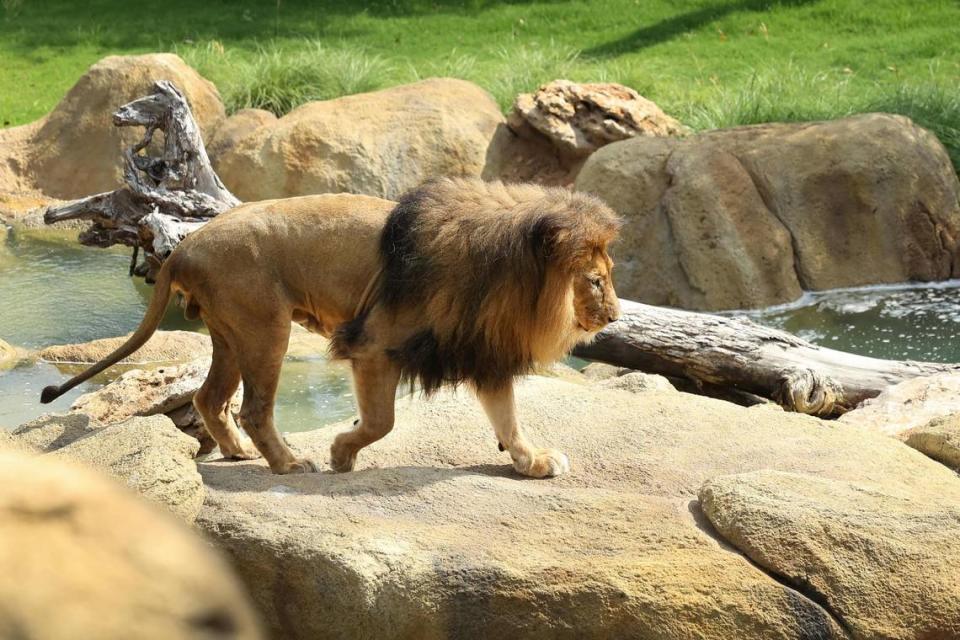
Predators of Asia and Africa, the Fort Worth Zoo’s newest habitat, opened to the public Thursday. For the first time since November 2020, visitors could see the zoo’s lion pride. Jabulani and the two females, Saba and Abagebe, lived at the Abilene Zoo while their habitat underwent renovation.
The new habitat is also home to two species that have never been on display at the Fort Worth Zoo — the clouded leopard and the African leopard.
Other predators in the new habitat include cheetahs, African painted dogs and two Sumatran tigers. A pair of striped hyenas, Felix and Farrah, returned to the Fort Worth Zoo from Abilene.
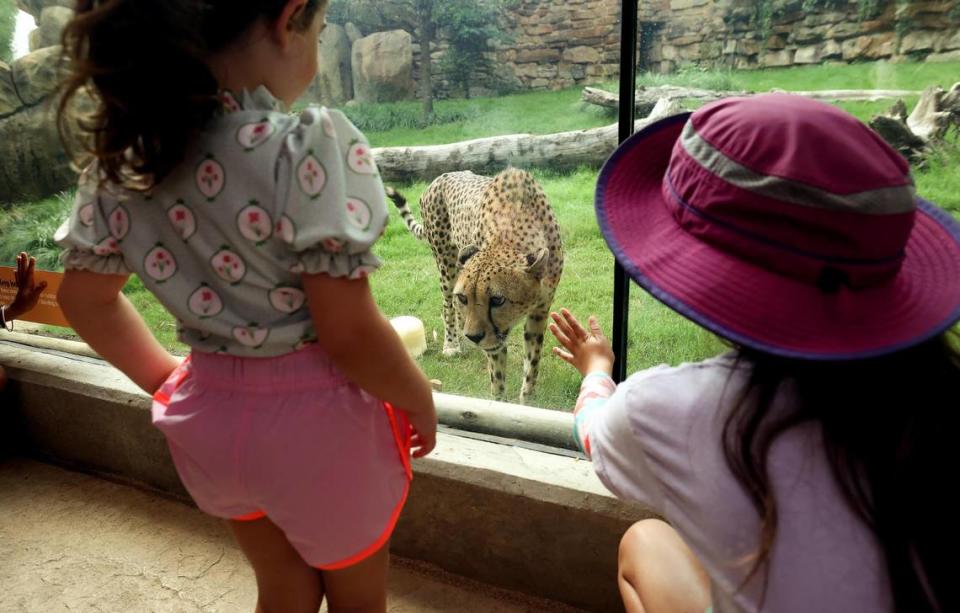
Predators of Asia and Africa is phase three of A Wilder Vision, the zoo’s $130 million capital campaign. The first two phases, the African Savanna and Elephant Springs, opened in 2018 and 2021 respectively.
Avery Elander, the zoo’s director of marketing and public relations, has seen A Wilder Vision from its early stages. Fundraising was underway when she joined the zoo in 2014, but the project hadn’t been announced publicly.
“Not an ounce of construction had started and so it was just this big idea, this big idea that Mrs. Bass had,” Elander told the Star-Telegram. “And slowly in 2016, we broke ground on the African Savanna and that opened in 2018. And it was like, ‘Oh, you know, it’s happening. It’s really happening.’ And here we are — three phases down, one to go. and It’s just, it’s been incredible to see the transformation.”
Old vs. new
The new habitat’s lush greenery and wide-open spaces are a vivid contrast from the wire caging and concrete that housed the animals when philanthropist Ramona Bass first visited the Fort Worth Zoo in 1983.
“When my husband brought me here the first time, the tigers were in cages the size of this room,” Bass said gesturing around her small office during a July 2022 interview. “They were on concrete and it was just caging and concrete, and it broke my heart.”
A public-private partnership between the City of Fort Worth and the Fort Worth Zoological Association in 1992 transformed the zoo’s vision and design. Since then, Bass said they’ve been trying “to do what’s right and make it better.”
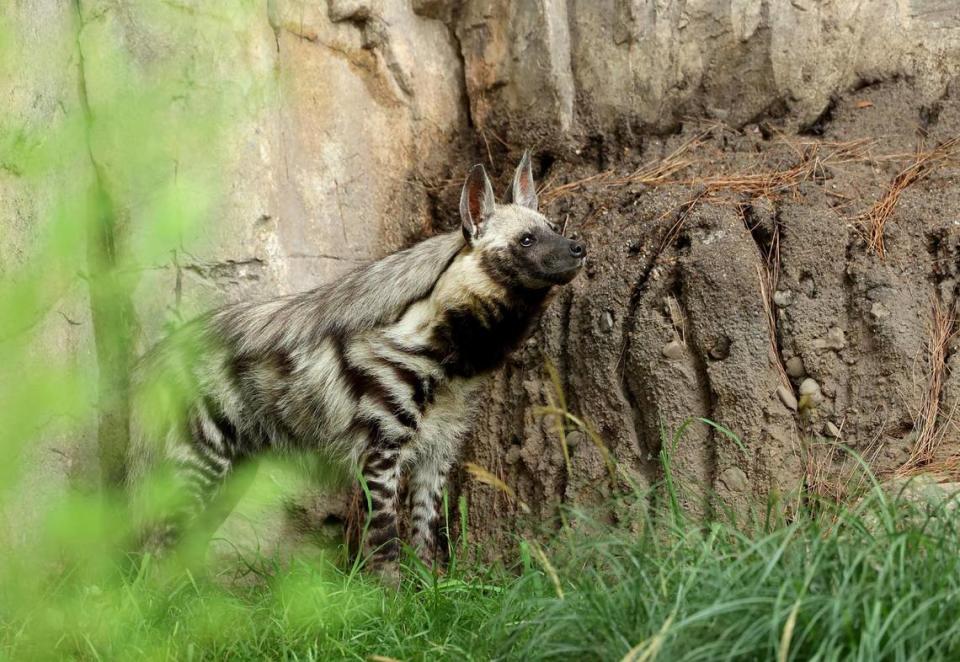
Like all Fort Worth Zoo habitats, the space for Predators of Asia and Africa came from repurposing land the zoo already owned. The new lion yard used to be two square yards of hoofstock species, according to zoo director Mike Fouraker.
Photos from that time show zebras roaming on large patches of brown grass under a handful of trees. The zebras were moved out of the zoo when construction on the Predators habitat started, but Elander said they hope to bring them back in the future.
The new habitat was designed to give the animals plenty of space, Fouraker said, and water features were placed where the animals would use them.
The African lion exhibit is about five times larger than the previous one, according to Elander, and the buildings where the animals live behind the scenes have been expanded.
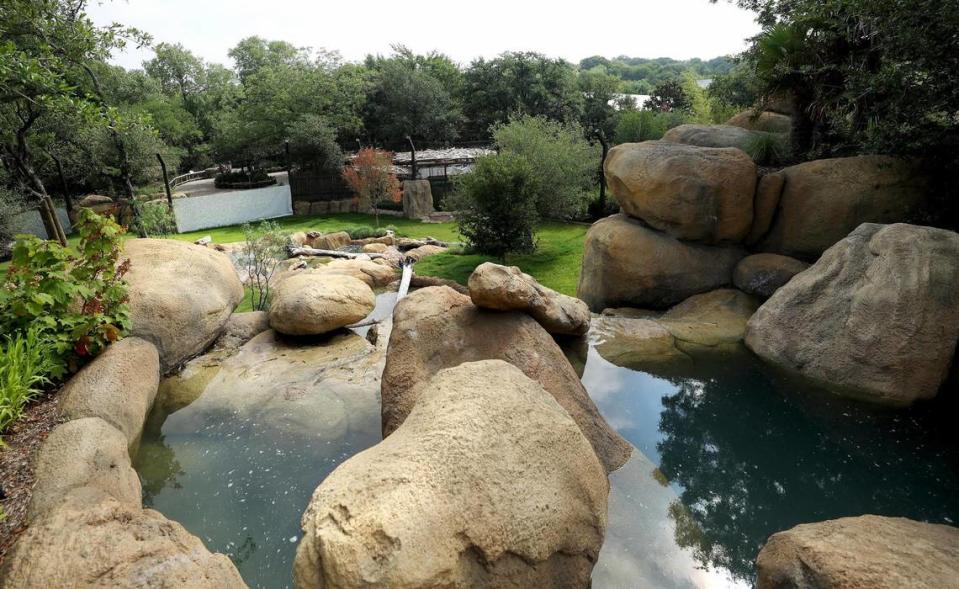
“It’s just a chance for people to see the animals in a beautiful new home,” Bass said. “There’s no question it was a desperate need — it’s just that you can’t do everything at once so we just keep moving that way. But all of them, all of these cats needed bigger habitats and ... I think we did it. I think we’ve got it in a way that’s perfect for all of them.”
Conservation and education
The Predators habitat is maximized for human/animal interaction. Thick glass barriers have replaced deep moats and allow visitors to see the big cats and the wild dogs at close range.
The glass surrounding parts of the lion exhibit is around 2-and-a-half inches thick with multiple panes and plastic in the middle, according to Fouraker.
Elander said the close proximity is intentional.
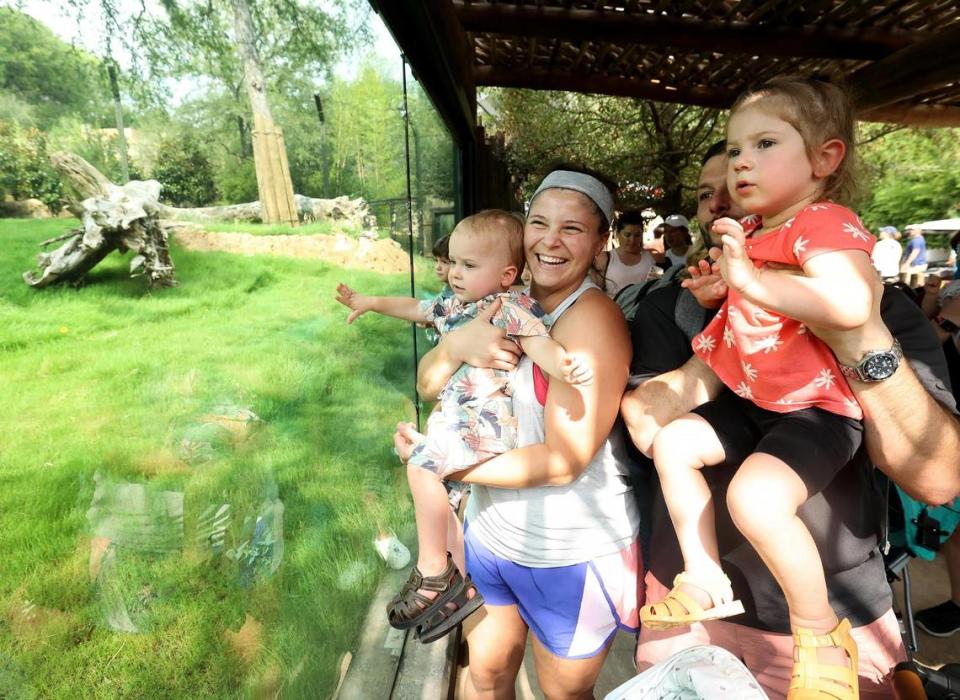
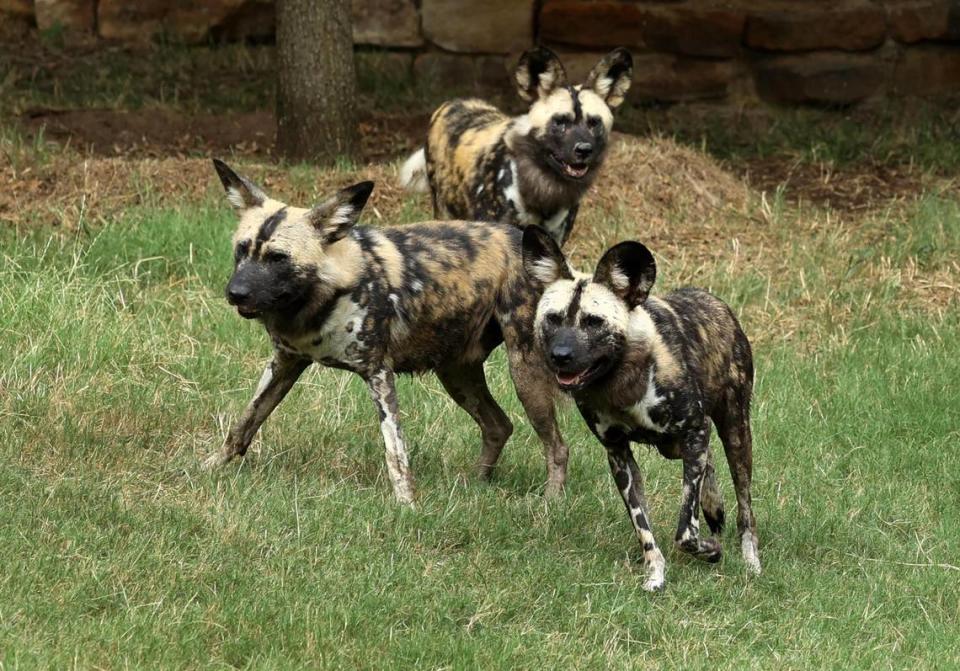
“We want people to come here and connect and really learn more about the animals,” she said. “Leave feeling inspired to want to do something about their counterparts in the wild.”
Graphics posted in front of each exhibit give information about the animals — where they live, how they hunt and if and why they are endangered. Fun facts, like how each lion’s whisker pattern is unique, are also included.
Preserving species for future generations is another goal at the Predators habitat.
The three lions originally came to the Fort Worth Zoo from a South African wildlife facility in 2012. Four years later Abagebe gave birth to three cubs, who later moved to other zoos and produced offspring of their own.
The lions are a new gene pool and a valuable asset to the zoo’s cooperative breeding program, according to Elander. The zoo staff hopes more lion cubs will be forthcoming.
The Sumatran tigers, a critically endangered species in the wild, are new to the zoo. Elander said they were chosen with the purpose of breeding.
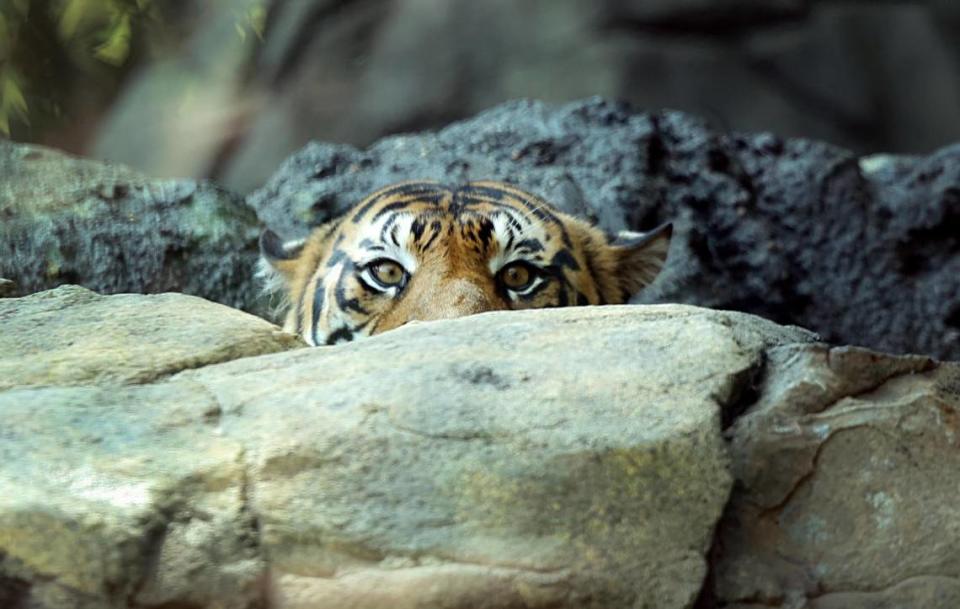
“We’re trying to pair the two most ... viable animals together to continue creating genetically diverse species,” she said.
The final phase of A Wilder Vision, Forests and Jungles, is projected to open in 2025. The habitat will include a pair of okapi, a striped mammal that looks like a zebra and is the only living relative of the giraffe.
The zoo’s African bongo population and critically endangered Sumatran orangutans will move from their present habitats and make their new home in Forests and Jungles.
“I think we’re lucky to have this space and have these animals here so that we can bring our children and grandchildren and introduce them to these animals,” Elander said. “And hopefully they can grow up, you know, fostering that care and appreciation and leave here with some knowledge and tools of what they can do to help them in the wild.”

